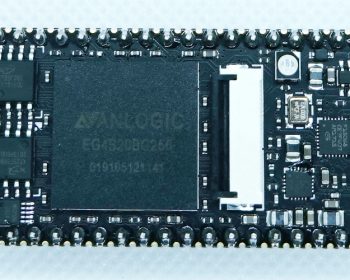In the previous article, we have set up the environment of the TANG PriMER FPGA development board from SiPeed, and have confirmed the logic synthesis and writing of the samples. In this article, we will start to synthesize the RISC-V processor, write it to the FPGA, build the software using Arduino IDE, and write it to the ROM on the board. TANG PriMER FPGA development board Logic Synthesis of RISC-V E203 Core and Writing to FPGA The first step is to synthesize the RISC-V core (Tang_E203_Mini). Download the necessary files from the following link. https://github.com/riktw/Tang_E203_Mini Launch the FPGA development environment TD, open the project file e203egmini_new.al from the Open Project menu, and execute the logic synthesis by clicking Process → Run. Setting up the software development environment Next, let’s set up the RISC-V software development environment. This time, we will build software with Arduino IDE and write to Flash using
Read more